M.J. DeMarco's Blog
August 27, 2025
The AI Job Apocalypse is Coming: Are You Prepared?
“The horse is here to stay, but the automobile is only a novelty—a fad.” — President of the Michigan Savings Bank, 1903, advising against investing in Ford.
“There is no reason anyone would want a computer in their home.” — Ken Olsen, Founder of Digital Equipment Corp., 1977.
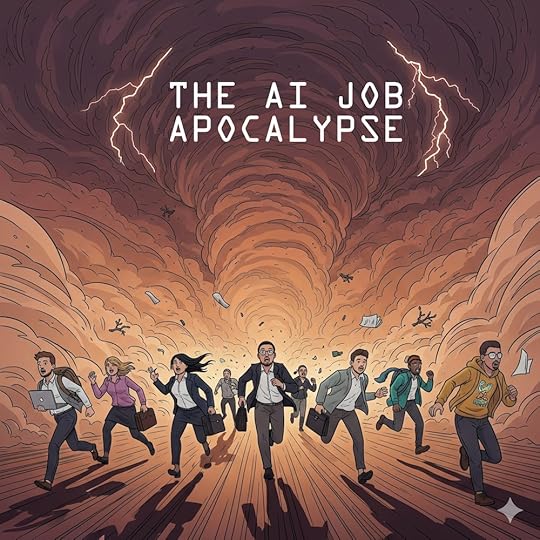
The graveyard of technological history is littered with dumb opinions, so-called experts who couldn’t see the freight train of progress barreling down the tracks. Every great leap is met by a chorus of comfortable, smug insiders who declare it impossible, impractical, or just a passing fad, right before it renders them obsolete.
And today, that same tired song is being sung about AI.
The skeptics call it over-hyped.
Wall Street is warning of a bubble.
Policy makers are downplaying the impact as AI revolutionizes one industry at a time, from legal to engineering. They are catastrophically wrong. And I only need to look at the last 72 hours of my own life to prove it.
Last week, I upgraded the forum to new hardware and a new server. Migrations are never fun and are usually wrought with issues, and this one was no exception. One issue? The forum’s enhanced search function choked and died. Without this function, finding content becomes virtually impossible. No problem. I did what any business owner would do: I found a specialist.
I contacted a server engineer, explained the problem, and he confirmed he could fix it. I told him he was hired. But there was a catch. The engineer couldn’t get to it until later in the week. In the old world, this would be the end of the story. I’d wait, he’d work, I’d pay. But we no longer live in that world anymore.
While waiting, I opened up ChatGPT, described the server environment in excruciating detail, and pasted the exact error logs into the prompt. The AI directed me to the command prompt, which to me is like navigating a 12-cylinder engine in a Lamborghini: overwhelming, confusing, and a completely foreign language.Yep, it might as well be Italian.
Two hours later, after a back-and-forth dialogue where I, a non-expert, was guided by the AI, the problem was solved. The search was fixed. My next email was to the human engineer. “Thanks, but I no longer need your services.” He just lost a job. I just saved $180, his hourly rate.
This is how AI job apocalypse starts. No robot is kicking down your door. It’s a client sending a cancellation email because a $20-per-month subscription is now doing your job faster and cheaper. And this fear is starting to ripple through the entire workforce.
CNBC recently cited a new trend emerging in the workforce: the concept of “job hugging.” Employees are clinging to their jobs, heads down, praying the AI reaper doesn’t notice them. (Interestingly, the article doesn’t even mention AI, but I can guarantee it’s the fear behind the curtain.) Employees are not job-shopping; they’re just hoping to survive the week without their role being “optimized” by an algorithm.
This shift is happening because the value of specialized knowledge is collapsing.
Entrepreneurship: Both Your Defense and Your Offense
The old playbook of trading time for money is a career-ender, whether as a business owner or an employee. The “job hugger,” the freelancer, the consultant, anyone selling a task, is standing on the train tracks. The ultimate defense against this revolution isn’t upskilling. It’s to stop being a skill-for-hire altogether and instead, master the tool itself.
The ultimate defense to the forthcoming job apocalypse is Fastlane entrepreneurship. AI is a tool. An employee is a tool. A consultant is a tool. An entrepreneur is the architect who wields these tools. AI is just the newest, most powerful tool in the box. While it will replace millions of human tools, it will create thousands of entrepreneurial mastercrafters who can now build empires single-handedly. Here’s how to frame it, Fastlane-style…
Become the AI-Powered Architect. Your job is no longer to do the work, but to design the system that does the work. Remember, Fastlane is all about systems and processes, separate from your time. An entrepreneur with AI is a one-person army, capable of achieving what used to require a team of 20 and a seven-figure budget. Stop being the bricklayer; be the architect directing a fleet of robotic bricklayers.
Attack the Human Gaps. AI is great at logic and data, but it’s a dumbass at empathy, trust, and community. This is your moat. Build a brand that hasn’t lost its humanity. Create a community your customers crave. Offer a human-centric experience so exceptional that no AI algorithm can replicate it. AI can resolve a support ticket, but it can’t connect with you with a tribe, for example, The Fastlane Forum! Master
Tangible, IRL Problems. AI can solve web-based problems: “Fix my server.” Yet, it’s not so good at real-time, tangible execution that must occur IRL, or “in real life”. While it can design a package for vegan Pop-Tarts, it can’t manufacture the product. It can’t produce the box. The new winners will be those who leverage the technology, but bring its power into IRL.
The revolution is coming. And you have a choice. You can be the person whose job is swallowed by the coming AI Apocalypse, or you can be the person holding the automation remote. You can be the cog made obsolete by the machine, or you can be the entrepreneur who uses those cogs to build a machine.
The choice is yours, but the clock is ticking.
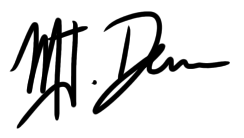
MJ DeMarco, Entrepreneur/Author
Want to discuss this topic? Visit the Fastlane Entrepreneur forum and chat about it!
This article was from The Life in the Fastlane Newsletter. Click here to subscribe.
April 9, 2025
The $1K Scale Test, Can Your Business Make You Rich?
Does your business have the potential to scale? In other words, can your business change your life and get you out of the rat race?
The $1K Scale Test is a strategy visualization that’ll expose whether your venture’s got Fastlane potential, or if it’s just another time-sucking job masquerading as a business. This is just one of 100+ actionable strategies and principles highlighted in my last book, The Great Rat Race Escape.
The $1K Test: Ask yourself… “If You Made $1K in Profits on One Day, What Would That Day Need to Look Like?”
This simple question isn’t about revenue that gurus like to flex on Instagram along side their rented Lamborghinis.
I’m talking about PROFITS.
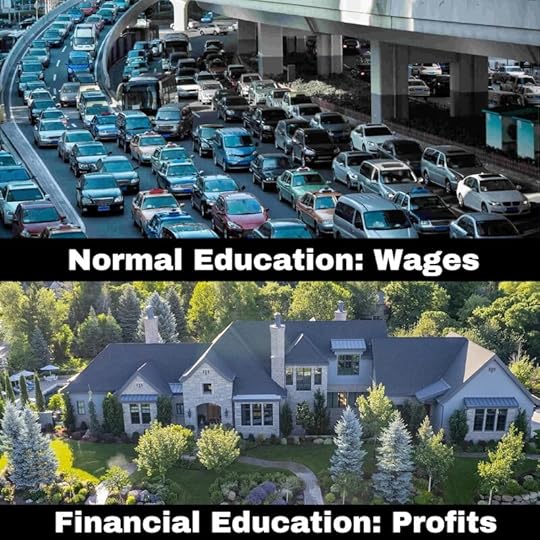
If you hit $1K in profits in a single day (which is $30K/mo in profit, an amount that starts to shift lifestyles and change lives) what systems need to be in place?
What processes?
What bottlenecks show up?
This thought experiment can help you identify if your business has a scaling problem inherent to industry or economic constraints.
Step 1: Reverse-Engineer the $1K Day
See it: $1,000 in profit after 1 day. What had to happen? Break it down like a mechanic tearing apart an engine…
Step 2: Systems Check—What’s Gotta Be in Place?
Lead Generation: What’s your funnel process? Think paid ads, SEO, email lists, or a referral system.Sales Process: What’s it look like? Automated checkout, landing pages, or a phone pitch? Can it handle 20 transactions without you babysitting every one?Fulfillment: How do you get the product in the hands of customers? What software are you running? Is there a team, or is it automated?Cash Flow: How fast do you get the cash into your bank? 3 days? 30 days? Invoicing?Inventory? Do you have any? Do you need warehousing? Third party fulfillment center?Labor: Is it possible by yourself? Need employees? Multiple locations? Multiple chefs in the kitchen?Step 3: Bottlenecks—Where Will It Break?
You’re the Bottleneck: If every sale, decision, or shipment runs through you, you’re the problem. Fix it by delegating or automating—hire a VA, use Zapier, train someone. Do something!Demand Weakness: Not enough leads? Your marketing’s weak. Glengarry Glen Ross: The leads are weak! Test new channels–Facebook ads, TikTok, door flyers, doesn’t matter if it works. Usually only 2 or 3 channels will represent 80% of your inbound leads.Fulfillment Failures: Can’t deliver 20 orders without chaos? Upgrade your tools–Shopify, a 3PL, again, a VA or employee.Profit Bleed: What isn’t enjoying economies of scale? Renegotiate suppliers, shippers, cancel the low-ROI ads, or raise prices and pivot to a more premium brand image.Step 4: Some Fastlane Best Practices
Nail a Value Skew, or Better Two or Three: Offer something so unique that people can’t say no–faster delivery, better quality, a no-brainer bundle. Unscripted and TGRRE goes deeper into value skew.Stack Traffic Sources: Again, your best traffic sources will likely only come from 2-3 sources. Problem is, its like kissing frogs looking for your soulmate. You might need to dabble with 20 sources to find those 2-3 heavy hitters. No matter what, build an email list.Avoid ONE OFF Products If Possible: A one off product is one and done. Like selling a book, or something that does not compel repeat buys. Conversely, if you sell a food product, or a personal grooming product, one customer offers far greater Lifetime Customer Value … one customer might order hundreds of times. This is where scaling magic can happen.Automate the Grunt Work: AI agents, AI tools, there is likely an automation for some grunt work.Act, Assess, Adjust: Run small experiments–$50 ad spend, a new headline, a 10% discount. Double down on winners, kill the losers. Gather data which beats guesswork.Leverage Other People’s Audiences: Influencer marketing has been my best channel for marketing — except I rarely pay for it. See below and the power of Productocracy.PRODUCTOCRACY: Aim for the productocracy so new customers become your unpaid sales force. A productocracy is when other people love your product so much, they tell others.Start small, but think big. That $1K day becomes $2K when you duplicate what works. Rinse, repeat.
Cant Do $1K a Day? You’ve Got a Scale Problem! Fastlane Exit: CLOSED.
If you can’t hit $1K in profits daily and keep it steady, your business is a hamster wheel. It won’t build wealth. It won’t set you free. It’s a job with extra steps.
Scaling isn’t about “hustling harder”, it’s about building a Fastlane system that runs without you chained to it.
If your $1K day relies on you working 18 hours, begging for sales, or praying for a viral retweet from Musk, Cuban, or Gates, you’re not scaling; you’re surviving.
Fix the systems, clear the bottlenecks, or confess the reality: you’ve got a scale problem, and the Fastlane is a fairy tale.
Wealth comes from leverage: time, money, people.
Before starting a business — run the The $1K Test and see what things look like.
Fail it, and you’re stuck in a fake Fastlane that exhibits Slowlane mathematics, picking up pennies while riding a tricycle that can’t go faster than 2 mph.
December 21, 2024
Your System Economy: A Difference Between Wealth and Poverty
Life’s biggest decision is one most people don’t even recognize—it’s system economics.
System economics is the framework of wealth accumulation in which your vocation, job, or business are compensated. For most, system economics is simply how one is paid for work. While this is technically true, this simple definition is how people remain trapped in poverty.
System economics are unavoidable; if you earn money, you are subject to some form of system economics.
For example, if you are fortunate to be drafted into the NBA, you suddenly become subject to the NBA’s system economics. The minimum salary in the NBA is more than $1,150,000, with many NBA players making tens of millions per year. It’s safe to say that if you want a wealthy future, putting yourself into the NBA’s “system economics” is a pretty safe bet. Of course, the only problem is, only a select few are chosen to play in that system.
Over the years, I’ve spoken frequently about a wealth equation— the terms and variables in which your time are compensated. If you make $20/hour as a cashier, your wealth equation is:
$20 X (Hours Worked) = Income.
The wealth equation defines your system economics.
In another instance, my 25-year-old nephew is doing spectacularly well financially for his age. For the last 3 years, he’s been selling new and used cars. Sure, not exactly glamorous, but he’s good at his job.
More importantly, his job gifted him favorable system economics—with hard work and good salesmanship, he could earn up to $250,000 a year or more. This higher wealth ceiling also has allowed him to become a landlord of two rental properties—another form of system economics. His excess earnings are allocated into the stock market and other investments.
His system economies:
A commissioned job with high ceilings is determined by units sold, not necessarily hours worked.A rental system subject to rental income and equity appreciation.An investment system subject to interest, dividends and stock appreciation.Through an expanded system economy, my nephew is more likely to become wealthy than the average person. His choices led him there.
Compare my nephew’s system economies with that of, say, a cashier at Walmart earning $15/hour.
The Walmart cashier’s system economy is constrained by the number of hours worked. We can conclusively say that the cashier will NOT accumulate wealth of any measure simply due to the system economy they suffer upon.
Why is a Fastlane business so critical to wealth? Answer: It creates favorable system economies so wealth is not constrained with hard limits— you can accumulate wealth quicker where hard limits are replaced with soft limits.
Sell 100 units of X at $10 profit per day and you earn $365,000 year—soft limits.
Sell 8 units of your time at $20 per hour, 5 days a week, and you earn about $41,000 a year—hard limits.
A marketing executive at a growing startup with stock options.The founder of a software service.A bus driver.A commissioned salesperson for industrial machinery.An auto mechanic.An auto mechanic that owns 9 shops.A franchisee of a sandwich store.A franchisor with 100 franchisees under operation.A founder who starts a company, takes it public and owns 40,000,000 shares priced at $15 per.A minor league baseball player who is called up to the major leagues and wins rookie of the year.A YouTube influencer with 3M subscribers.
System economies reflect the concepts of ULL (Uncontrollable Limited Leverage) and CUL (Controllable Unlimited Leverage) highlighted in The Millionaire Fastlane.
Here are some examples of careers and enterprises where the system economics vary widely…
A real estate agent. (The system economies here have recently gone through a major disruption!)A CEO of a major corporation with bonuses and options.A marketing executive at a growing startup with stock options.The founder of a software service.A bus driver.A commissioned salesperson for industrial machinery.An auto mechanic.An auto mechanic that owns 9 shops.A franchisee of a sandwich store.A franchisor with 100 franchisees under operation.A founder who starts a company, takes it public and owns 40,000,000 shares priced at $15 per.A minor league baseball player who is called up to the major leagues and wins rookie of the year.A YouTube influencer with 3M subscribers.
Notice how each one of these situations has unique system economies.
Here are some questions to ask yourself as we approach the new year…
What are your current system economics?What are the constraints of them?Can you 10X your income next year, or is it structurally and fundamentally impossible?How can you change or improve your system economics?What kind of job change will improve your system economics?What kind of business pivot will improve your system economics?The most significant upgrade for your wealth is changing your system economics. Creating wealth doesn’t need to be difficult—it only becomes difficult when the system economics is limited or, worse, suffocating.

MJ DeMarco
October 28, 2024
Have You Become a Delusional Knowledge Zombie?

Imagine holding a winning lottery ticket, but letting it expire in your wallet—uncashed. Millions lost.
Imagine joining a cutting-edge gym, learning all the lifts, and then never setting foot inside again.
Imagine possessing a map to buried treasure but ignoring it because the journey might be inconvenient, uncomfortable, or demand a few sacrifices.
Imagine mastering everything there is to know about the stock market—RSI, Bollingers, Stochastics— to a level that could rival a billionaire hedge fund quant, and yet never buying a single share.
Imagine owning a loaded gun, and when a serial killer kicks down your door, you freeze, and you get slaughtered.
Imagine having the blueprint to create massive wealth as an entrepreneur, but instead of building the empire, you keep reading more books, tinkering with the idea, waiting for “the right moment.”
Each of these scenarios reveals the same brutal truth that kills more dreams than a 9-5 job: the myth of knowledge as power. This is the plight of the knowledge zombie.
Because knowledge isn’t power.
Knowledge is latent, potential power.
Over the last 15 years, I’ve gotten thousands of reader testimonials.
Over time, I noticed an 80/20 pattern: two distinct types of responses.
80% of the testimonials are a declaration of latent, unused potential. They go like this:
Your book was great; I finally understand what I need to do.
I loved your book! What should I read next?
Your book changed my life. I feel ready to pursue what matters.
These people found the treasure map, but they haven’t started digging.
They’ve got a winning ticket, but they haven’t cashed it in.
They’re holding the gun, but they’re not pulling the trigger.
Then there’s the other 20%.
These are the testimonials from people who didn’t just absorb knowledge—they executed. (And yes, these are real testimonials, the 85M seems to be a pattern!):
I sold my company for $85M.
I’ve read this book three times. It made me my first $100,000. It changed my perspective on life, especially the chapter on speed and execution.
I started a business, and now I earn $30K passively every month.
This man’s book, The Millionaire Fastlane, changed my life. I’ve done $85 million in sales since reading it. Highly recommended.
Do you see the difference? One group collects ideas. The other acts on them.
The same could be said for powerful tools or resources which go unused.
For example, artificial intelligence. Are you using it? Or is it a life weapon you refuse to deploy?
Likewise, I cofounded GoalSumo which is a simple, but powerful goal-setting, goal-planning, and productivity system that laser-focuses ambitious goals into winning days and winning weeks.
This is a powerful resource right out of the box that doesn’t require special tweaks or customization; by itself it is potential power, executed daily and it becomes executed power.
So ask yourself: have you become a knowledge zombie? Has knowledge hypnotized you into thinking you’re making progress?
Did you read one, or all of my books, and then ask, “What should I read next?”
If so, you’re stuck.
And as my mom used to say, Shit, or get off the pot.

MJ DeMarco
PS1: Great video here which inspired this post…
View: https://www.youtube.com/watch?v=zS2yF1dUYfs
Want to discuss this topic? Visit the Fastlane Entrepreneur forum and chat about it!
This article was from The Life in the Fastlane Newsletter. Click here to subscribe.
August 25, 2024
“Normal, but Perfect,” The Powerful Decision Framework for Unleashing Your Best Life
This post (and newsletter article) was inspired by another thread (and many others) when I repeatedly ask people, “What’s your normal, but perfect” day look like?”
“Normal, but Perfect,” A Decision Framework for Living Your Best Life
The most common question asked at the forum is always about decisions.
Do I start this business?
Learn this skill?
Skip college?
What do I do?
I almost always retort, “Where do you want to be in 5 years?”
Picture this: You wake up five years from now.
The air is crisp, and the morning light filters through the curtains, casting a warm glow over your room. You stretch, feeling the comfort of a bed that seems custom-made for your body. Because it is.
To your left, your partner—your confidant, your love—sleeps peacefully.
As you rise, your feet meet the smooth, hardwood floors. The crackle of a fireplace fills the room, its flickering light reflecting off the walls of a space entirely yours. This is your sanctuary, your home—paid off, perfectly aligned with your taste, and symbolic of your journey.
It could be a sun-drenched loft in Chicago or NYC, where the hum of urban life energizes you. Or it’s a secluded cabin in the Catskills, where the silence is broken only by the rustle of leaves. Whatever the setting, it’s your dream home, shared with your dream partner.
Today isn’t special because of a holiday or an event; it’s special because it’s your “normal, but perfect” day.
As you move through the morning, you do at your own pace, with the freedom that comes from years of making the right choices.
You pour a cup of fresh-brewed coffee, savoring the aroma as you share a moment with your spouse. There’s no rush. The day is yours, and it’s filled with the things that make you feel alive.
Perhaps you start with a brisk run through the woods after dropping the kids off at school. The air is fresh, the path familiar. You return home, energized, and settle in to answer a few business emails in your home office—a space that’s as inspiring as it is functional. Then, you retreat to your backyard treehouse, the perfect spot to write that book you’ve always dreamed of.
Later, you head to your basement home gym, where you push your limits, knowing that every drop of sweat brings you closer to your peak physical condition. Afterward, you volunteer at a local animal shelter, a cause close to your heart. The animals know you by scent, and the staff greets you with warm smiles—you’re not just a volunteer; you’re a benefactor with an entire wing named after you.
As the day unfolds, you meet with a handpicked team working on a project that excites your soul. It’s not just work; it’s a passion. The afternoon is spent cheering on your kid at their baseball game, your heart swelling with pride. And as the sun sets, you enjoy a late dinner with your spouse, discussing life, dreams, and the future you’re still building together.
This day is extraordinary, not because of what you’re doing, but because of how you feel—completely content, satisfied, and in control.
There’s no debt hanging over your head, no stress gnawing at your nerves. You’re living harmoniously with your surroundings, your purpose, and yourself. But here’s the thing—this isn’t a once-in-a-lifetime experience. This is your normal.
But let’s rewind for a moment. You’ve just taken a glimpse into your future—a day that could be your reality in five short years. It’s vivid, it’s tangible, and it’s within your reach.
But it won’t just happen by chance.
You need to create it, one decision at a time.
Start by grabbing a notebook or opening a blank document. Write down, in meticulous detail, what your perfect day looks like—hour by hour. This isn’t just about the big things like where you live or what you do for a living. It’s about the small moments that make up your day.
What time do you wake up?What’s the first thing you do?What does your morning routine look like?How do you spend your afternoon?Who’s with you in the evening?What are you driving and where are you living?How is your health?What does your work look like?Your hobbies?Write it all down as if it’s happening now.
Step 2: Set Your IntentionsWith your vision in hand, it’s time to use it as your compass. Every decision, big or small, should be weighed against this vision. When faced with a choice, ask yourself: Does this move me closer to my perfect day, or does it push me further away
Is this job offer in line with the life I want to live, or is it a detour?
Does this relationship elevate me, or does it drain me?
Your vision isn’t just a dream—it’s your decision making framework.
Your “normal but perfect” day isn’t just a fantasy—it’s a goal. And goals require action.
Break down your perfect day into achievable steps. If working from home is part of your vision, what must you do this month, this week, and today to make that a reality? If financial freedom is your aim, what concrete steps are you taking now to ensure that future? The key is to start small but be relentless. Each action, no matter how minor, is progress toward your perfect day.
This is where GoalSumo.com.com comes in—a platform I cofounded to help people like you bridge the gap between where you are now and where you want to be.
GoalSumo.com is the productivity system I’ve used in the last 2 years, a system that helped me learn how to play piano, get in shape (lost my love handles and packed on muscle!), and write my next book.
GoalSumo is built around the principle of backwardation—reverse-engineering your perfect day by setting clear, actionable goals.
When you set an ambitious goal—creating a ten-figure business, achieving peak physical fitness, or crafting your dream home—GoalSumo helps you break it down into manageable steps. It turns your “normal but perfect” day into a decision framework.
At GoalSumo, laser-focused action is the priority. Every week, you set a new goal, a step that brings you closer to your vision.

Whether tackling a specific project, making a financial decision, or prioritizing your health, GoalSumo keeps you on track each day but keeps that day focused on the big picture.
Of course, if you prefer, the backwardation strategy can work just as well with a simple pen and paper—this is how I did it for years before cofounding GoalSumo.
Life is dynamic, and so is your vision. Revisit your perfect day regularly. As you grow and change, so too might your aspirations. And that’s okay. Adjust your vision to reflect your evolving growth.
Your perfect day should always be a true reflection of your most authentic self. Keep refining, keep adjusting, but never lose sight of the end goal.
Here’s a personal story: I wrote out my vision years ago, long before GoalSumo existed. My dreams then included owning a Ferrari and following pro sports religiously. Here’s the story and the picture:
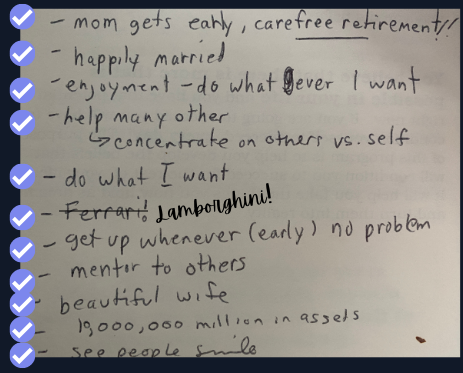
As time passed, I realized some desires no longer aligned with my goals. In my 20s, I wanted court-side seats to the Chicago Bulls games. In my 30s, I had zero interest in it. So, I adjusted my vision— your “normal but perfect” constantly changes.
Step 5: Activate Your VisionThis exercise isn’t about escapism or fantasy; it’s about creating a roadmap for your future. It’s about making intentional decisions today that will shape the life you want tomorrow.
Visualization is a powerful tool, but its true strength lies in its ability to guide your actions. When you align your daily choices with your future vision, you begin to live with purpose and intention. You become selective about how you spend your time, who you spend it with, and what you focus on.
And here’s the secret I’ve been saying for years: if you’re actively working toward your dream, you’re already living the dream.
Happiness isn’t something you achieve once you reach the finish line; it’s something you experience along the journey. So, as you go about your day today, keep that “normal but perfect” day in mind.
Ask yourself with every choice you make: Is this choice bringing me closer to that day? Then, act accordingly.
The life you want isn’t just a distant dream—it’s within reach, one intentional decision at a time.

Best wishes,
MJ
August 16, 2024
How Many Poison M&Ms Are Causing You Lost Sales?
Many years ago, a woman emailed me and said she didn’t buy my book despite it being recommended by a colleague. In her email, she said she visited my website and noticed a few spelling errors. To her, it was an egregious oversight and an immediate turn-off, which caused her to walk away.
In business, this is called negative skew— one negative business attribute cancels out dozens of positive ones.
Despite a recommendation from a co-worker, despite all the good reviews, despite every favorable reason for buying, ONE element ruined the entire buying process.
In effect, the spelling error became a poison M&M.
The poison M&M analogy is this: If you were offered to snack from a bowl of M&Ms and one of the M&M’s was laced with poison, would you stick your hand in the bowl and eat one?
Of course not.
That single poison M&M has rendered the entire bowl untouchable.
And it is true with your business.
Consider this example, which happened to me last week.
I was ready to buy this scale from Withings until I read this scathing review.
The Poison M&M: Amazon Review
Withings avoids customer contact and warranty replacement for defective products
Instant turn-off. It was my poison M&M.
I went from a customer ready to buy to a walk-away. Many positive features about their product convinced me to buy, but ONE in their execution convinced me not to.
I can contact Google, Facebook, or the IRS if I want to be ignored and treated like an unimportant POS. I don’t need it from a company supposedly with a corporate mission of better health.
Negative skew. The poison M&M. They are deal-breakers, much like a reason to ghost a date after one dinner.
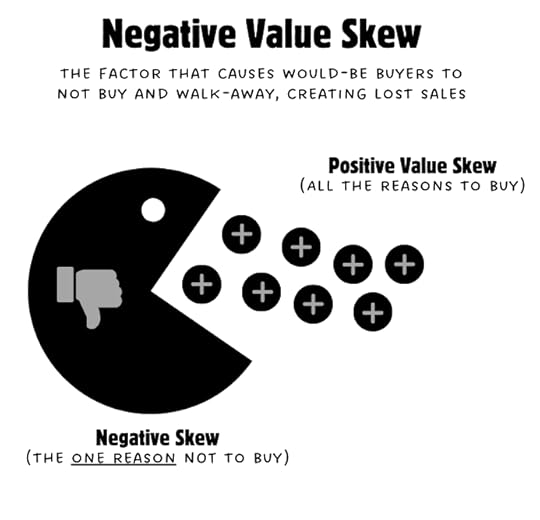
The question is, what poison M&Ms are in your business that are stopping people from buying?
Sometimes, it’s as simple as a spelling error, and sometimes, it’s as complex as “I don’t like your forum layout” (true!).
No matter what poison M&Ms are in your business, it’s your job to discover and remove them.
Every business guru focuses on value, features, and benefits. But none of them focus on the reasons why people ARE NOT buying. Because the reason why people do not buy is often singular and disastrously poisonous.

MJ DeMarco
July 11, 2024
Fire Unlimited Motivation + Focus: The Problem/Purpose Paradigm
How to Tap Into Unlimited Motivation and Give Yourself a Laser-Like Focus. Every. Single. Day.
Imagine you’re chained to a railroad track.
In the distance, you hear the ominous clatter of an approaching train. Your heart pounds like a jackhammer, and every beat is a desperate reminder that time is slipping away.
The lock mechanism trapping you on the tracks can only be solved if you decipher the Latin passcode etched on its surface.
Death is around the corner if you don’t take action and translate the code from Latin to English. As a bonus, a ten-million-dollar suitcase sits next to the tracks if you solve the code and set yourself free.
Unfortunately, you don’t know Latin, and your smartphone isn’t in your pocket. However, behind you is a stack of books piled 6 feet high and 3 feet wide.
Now let me ask you something…
What would you do as the moments count down to your tragic, grisly ending?
Would you…
…take a nap?
…examine the books and decide to read $100M Offers? …examine the books and decide to read The History of 19th Century Trains? …comb your hair?…whistle Dixie?…pick up the large rock next to you and do bicep curls?Or would you…
… scream at the top of your lungs for help?… pull vigorously at the chain and its lock, looking for a weakness?… examine the books and read the one titled Latin to English Made Simple?
You see, when you’re faced with a problem as clear as the sound of the train’s whistle and the death it represents, everything becomes clear.
Your problem. Your purpose. Your motivation.
Suddenly, none of these things are ambiguous, and your next actions become crystal clear. The waffling ends.
The waffling ends.
 The action-faking ends.
The action-faking ends.
 The tepid motivation ends.
The tepid motivation ends.
 The purposeless reading of books with no application of them ends.
The purposeless reading of books with no application of them ends.
Problem: Set myself free and avoid a tragic death.
Purpose: To live, and live well.
Motivation: Permanently on fire until you die, regret-free.
This powerful combination of PROBLEM and PURPOSE is the key to drawing unlimited motivation and focus and creating your best life.
Become Laser-Focused With A Problem
Now, let’s switch tracks—pun intended—to the Fastlane. Motivation is like a patient on Prozac, up, down, and everything in between. However, the same principles that drive you to survive on the railroad tracks can be translated into a Fastlane with remarkable usefulness.
Ironically, the most common problem I read at The Fastlane Forum is that the user has no problem.
Where do I start? What do I do? What’s next?
With no problem to solve, the user wanders aimlessly, reading book after book, watching podcast after podcast, and doing nothing with their precious time.
Find a problem, put yourself on the tracks, and make everything clear.
Every successful business starts with a problem. It’s the itch that needs scratching, the fly in the ointment, the burr under the saddle.
I cofounded GoalSumo.com.com because I was tired of using a paper-and-pen “to do” list for my 1/5/10 strategy. I founded the Fastlane Forum because I was tired of visiting other business forums littered with scammers and promoters. I write Fastlane books because I’m tired of people being misled down a path of financial mediocrity where financial freedom awaits them in a wheelchair and diaper.
Consider the story of Airbnb. The founders, Brian Chesky and Joe Gebbia, faced the problem of being unable to pay their rent. Train anyone? Then, during popular conferences, they saw another problem/train in travelers’ difficulty finding affordable lodging. Their solution? They rented out air mattresses in their apartment. What started as a minor fix for a personal problem spiraled into a global business, solving a universal issue for millions.
Identifying a problem isn’t just about finding something broken; it’s about spotting an opportunity to improve something. This could be anything from a gap in the market to a pain point that no one has adequately fixed. If you read Unscripted or The Great Rat Race Escape, value skew—doing one thing better than the competition—is the key to starting a business with gravitas. Skew multiple attributes—ingredients, price, convenience, packaging, delivery, shipping—and things really magnetize.
To learn more about VALUE SKEW visit this forum thread.
The Purpose
While a problem refines focus with that of a laser, a purpose keeps it in motion. The purpose is the compass that guides your efforts, the North Star that keeps you on course. It’s the reason you jump out of bed in the morning (or crawl out, if you’re not a morning person) and the driving force behind every decision you make.
When you’re chained to the railroad tracks, the purpose is clear: To live. To avoid tragedy.
Yet, how is life any different?
Millions of people poison themselves daily with the food they shove into their mouths, eroding their health and vitality. They don’t see the train.
According to the latest research, the average teenager spends nearly 5 hours on social media daily. They don’t see the train.
A clear purpose can vary widely—from helping others and creating positive change to achieving financial freedom or leaving a lasting legacy. The important thing is that it resonates deeply with you and aligns with your core values.
For me, I found my purpose early. After watching my divorced mother struggle every month to pay the bills, I knew I wanted financial freedom. When I saw that Lamborghini as a teenager, I knew I could do it, not just the Slowlane way, but fast.
This was my purpose— a purpose to live, and live well.
Armed with this type of purpose, you’ll do anything for it.
Cold call.
Ring doorbells.
Learn code.
Speak in front of an audience.
Read a book on how to translate Latin to English.
Suddenly, “I don’t like that,” or “I’m not good at that,” becomes completely irrelevant.
Unlike the ill-advised “passion,” purpose gets things done and has no prerequisites. If you “followed your passion,” you’ll never read the book From Latin to English because it’s boring, bland, and not blanketed by your comfort
zone.
A great blending of PURPOSE and PROBLEM comes from Tom’s Shoes. Founder Blake Mycoskie identified a problem: children in developing countries lacked shoes. His purpose? For every pair of shoes sold, a new pair would be given to a needy child. This “one for one” model addressed a significant problem and established a purpose that inspired both customers and employees, leading to a thriving business.
The Synergy of Problem and Purpose
This death train metaphor can be applied to real life with astonishing effectiveness. Death’s train is indeed approaching, and one day, it will arrive.
Question is, have you lasered your focus and found your problem? Have you given your life clear, actionable direction?
Have you defined a purpose that will make you crawl through a sewer pipe for freedom, like Andy Dufresne from Shawshank fame?
When a compelling problem meets a powerful purpose, motivation isn’t, just an occasional visitor; it takes up permanent residence. The problem keeps you grounded in reality, ensuring your efforts are practical and necessary. The purpose, however, fuels the right passion and keeps the fire burning, even when the going gets tough.

Harnessing the Problem / Purpose Paradigm… NOW.
1. Identify the Problem:
Look for pain points in your industry or personal life. What frustrates you? What could be improved? What do you hate? For me, “I’m tired of [blank]” always spotlights problems! Keep your eyes and ears open—problems often disguise themselves as everyday annoyances.
2. Define Your Purpose:
Reflect on what truly matters to you. Is it making a positive impact, achieving financial independence, or creating something beautiful? Your kids? Your purpose should be a guiding light, not a fleeting fancy.
3. Marry the Two:
Once you have a problem and a purpose, let them focus your actions. Use the problem to create a roadmap of goals and milestones. Join GoalSumo.com and map out a plan or download a 1/5/10 Planner. Let your purpose infuse those goals with meaning and significance.
4. Stay Adaptable:
Life is unpredictable, much like those surprise plot twists in your favorite TV series. Be ready to pivot and adapt your problem-solving approach while staying true to your core purpose.
5. Adjust Expectations
Life is full of problems. Expect them. Solve one at a time and you’ll move forward one at a time. Oh, and what is the best book you should read next? It’s the book that will solve the front-facing problem that is stopping your progress. From Latin to English, remember?
6. Celebrate Progress:
Recognize and celebrate your achievements, no matter how small. Every step forward is a testament to your problem-solving prowess and purpose-driven intensity.
Fastlane success isn’t complicated.
Find a problem to clearly define your next actions.Be driven by an overarching purpose that forces you out of your comfort zone.Repeat.Progress.Live well.Or don’t.
Either way, a train is coming.

Best wishes,
MJ DeMarco
Want to discuss this topic? Visit the Fastlane Entrepreneur forum and chat about it!
This article was from The Life in the Fastlane Newsletter. Click here to subscribe.
March 28, 2024
Environmental hacking: My life’s most reliable “life-hack” is also the easiest to use (or neglect).
Three years ago, after 25 years, I traded Arizona’s sun for Utah’s mountains, upgrading my home from a plentiful 4,400 square feet to a sprawling 13,000. The game-changer? There were several, from an indoor basketball court to a home theater to the most important of all: a home gym.
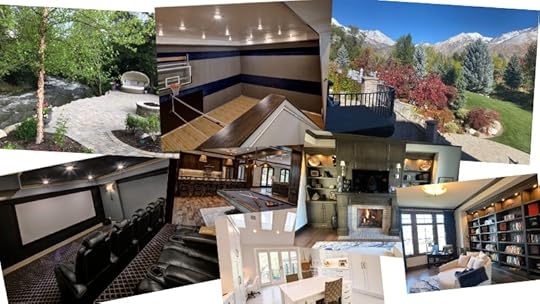
At last, I could exercise in peace!
There were no more teenagers glued to their smartphones while “working out,” no more meatheads glaring at me for using the leg press, and no more scantily clad fitness influencers parading around like they were on a modeling runway.
Finally, it was just me, my workout, and the freedom to exercise shirtless without an audience. I could also blast my music as loud as I wanted.
As you can expect, my workouts became more consistent. I no longer had to commute to a gym, so working out was as simple as walking downstairs. It was the first time I had not had a gym membership in 30 years.
But something interesting happened.
While my frequency of workouts increased, the intensity and duration suffered.
It was easier to quit, to cut a workout short, or just wander upstairs and go back to work, fire up a protein shake, or just flake out.
Yes, I still made gains, but I hit a plateau pretty quick.
Then, a twist: a new gym opened just 12 minutes away in an area that desperately needed one. While I had no interest in rejoining the crowds of teenagers and camera-ready fitness YouTubers, this gym boasted a red-light therapy machine, a lap pool (sorry, I won’t be Wim-Hoffing in my own pool in the winter) and a dry sauna.
Boom!
Those three features— a red-light machine, a blazing hot sauna and a year-round pool—turned me from a skeptic into a buyer on the spot.
Quick refresher: Any feature or benefit that flips a switch for potential buyers, transforming curiosity into commitment, is a value skew. And the more value skews you present to potential customers, the more buyers you get.
MJ DeMarco, The Great Rat Race Escape
What skew can you add to your business to attract more buyers? Please don’t confuse “value skew” with “throw more money into unlimited features” but high leverage activities that can change buyer perceptions.
While this newsletter isn’t about value skew (keep reading) it is worth repeating—more value skew = more buyers.
Here is a sample list of value skews you can leverage in your business. Remember, the more “value skews” you put into the competition, the more runners you can get to cross the value threshold. (This concept is not discussed in my first two books, but in my 3rd book, The Great Rat Race Escape )
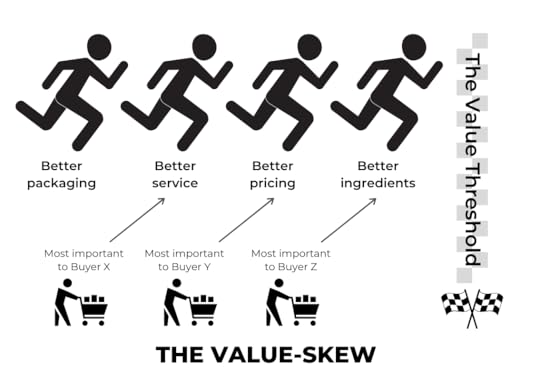
Anyhow, back to my gym story…
After joining my new gym, I went every day, even to stretch or jump rope.
Then, something amazing happened—my workout intensity and duration went from 5s and 6s to 9s and 10s.
I got over my plateau and leveled up, becoming stronger and fitter.
Why?
Environmental hacking:
I altered my environment.
While I wouldn’t say I like crowds, being surrounded by highly fit people, both men and women, elevated my intensity and motivated me.
What if your desk was next to your favorite entrepreneur or business mogul? What if I sat next to you?
Wouldn’t you do better work? And have better productivity?
This is the ultimate life hack for transformative change: Shift your environment.
If you ever watched “My 600lb Life,” where morbidly obese people try to lose weight and fail, you’ll notice one commonality: They fail to change their environment.
After consulting with Dr. Now, people return home to a dietary shitshow enabled by family members. You cannot lose weight when your dinner options are donuts, pancakes, and buckets of fried chicken.
In other words, don’t expect to cure your alcoholism while owning a tavern.
So, if you’re feeling stuck and your motivation is gone, overhaul your environment!
My leap from Chicago to Arizona, to selling a company that no longer inspired me, to stepping back into a gym after two years away testify to this principle’s power.
But don’t think you must upend your life with a cross-country move.
It’s the more minor shifts that can pack the biggest punch. Try reorganizing your desk, changing your work location, or simply tidying up. Whenever I write, I clean up my workspace; a cleaner workspace = cleaner writing.
Consider switching jobs or even roles within your current job. Maybe it’s time to embrace significant personal changes, like starting or ending a relationship.
Change a living situation.
It could be as simple as biking to work, writing by the sea, or swapping the gym for home workouts. Yes, you might do better working out in solitude versus a crowded gym.
YouTuber Casey Niestat’s goal of running a marathon in under three hours, chronicled in a compelling video, vividly illustrates this principle. Despite the video’s main message of perseverance and incremental progress, a crucial turning point came through an environmental shift.
After years of stagnation, Casey broke his plateau by teaming up with an Olympic marathon runner. Transitioning from solo training to mentorship transformed his performance.
Check out the video—it’s an inspiring watch.
So, what’s the takeaway?
Manipulate your environment to fuel your success—it is one of the simplest and most potent life hacks you can use.
How can you alter your surroundings to accelerate your growth?What aspects of your environment are holding you back?What can you modify, shift, or remove?What’s stopping you from these changes?What’s the best environment and worse?Know thyself— then change your environment and change your life.

MJ DeMarco, Author / Entrepreneur
This article was from The Life in the Fastlane Newsletter. Click here to subscribe.
Want to discuss this topic? Visit the Fastlane Entrepreneur forum and chat about it!
March 14, 2024
Poison Pens: Pick up a red pen, expect to read in red ink…
Thanks to The Fastlane Entrepreneur Forum, I’ve interacted with millions of aspiring entrepreneurs over the last 15 years. Yes, MILLIONS!
Here’s what I learned: Most won’t succeed as they dredge through life with a cadre of poison pens—limiting beliefs and destructive premises that fund poor decisions and hence poor outcomes. For example, if you hate your job but falsely believe “Starting a business is risky,” you’ll stay stuck in that job, choosing unknown risk over known pain.
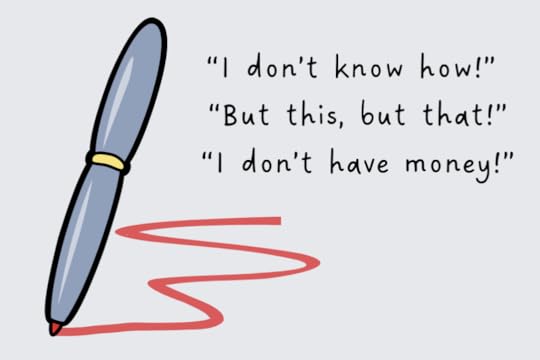 What poison pens are ruining your life?
What poison pens are ruining your life?If you carry these poison pens, they then become responsible for writing your story, page by page, day by day.
Limiting Belief = Poison Pen = A Bad Life StoryArming yourself with these pens to write your story while expecting a different outcome is like picking up a Stephen King novel and expecting a romance over some diabolical horror show.
Here are the 8 most destructive poison pens that will turn your entrepreneurial endeavors into the same: a diabolical horror show with a predictable ending: The death of your entrepreneurial dreams.
#1) THE MARKET IS SATURATED
The market is NEVER saturated if you offer a better product and a better value. People who ask such questions aren’t looking to create value, they’re looking to chase money; which is why they ask about “saturation.”
RETHINK: Think of the market like a raging river; it naturally gravitates toward value and value is the path of least resistance; the water doesn’t care how fast or how much it is flowing; it simply goes where it needs to go.
#2) I DON’T HAVE TIME
Actually, you do have time, but starting a business isn’t as important as Netflix, sleep, video games, TikTok, or the Yankees’ 75th game of the season. Translation: My entertaining comfort is more important than my freedom.
RETHINK: There are 168 hours in a week and if you have a 40 hour workweek, there are 128 hours left for your dream. How can you make time by removing what truly isn’t important your life? Or, what adjustments can you make that will help you invest more time in your rat-race escape?
#3) I DON’T HAVE MONEY!
Money certainly helps but it isn’t a requirement. Value is blind and doesn’t ask you for a bank account balance. If you have skills, you can charge a premium price—money—for those skills. When people refuse to acquire skills, they refuse to acquire money.
RETHINK: What skills can you hone to increase your value? Where is your money going? What side-hustles can you start that will raise your value per hour worked?
#4) I DON’T HAVE SKILLS!
No one is born with skills, you must acquire them with grit & focus. I wasn’t born an entrepreneur or an author. I honed these skills over years through deliberate practice. Do you think Tom Brady was born with a football? Or Messi with a soccer ball? For me, financial freedom was more important to me than the latest Call of Duty release.
RETHINK: Again, what is your priority? Winning a damn video game? Or winning at life and living a dream? Put forth the same effort into your entertainment vices into learning and skill development. And then one day, you might win the real game—life.
#5) I DON’T HAVE ANY IDEAS!
Wow, it is so awesome you live in a perfect Utopia where there are no problems, no faulty products, no inconveniences, no poor customer service experiences; nope, life is just perfect!
What a joke! This poison pen reflects someone who has no clue, and no chance.
RETHINK: What irritates the F* out of you? Solve it! Be better!
#6) I HAVE KIDS!
That’s right. I forgot that in all of recorded human history, no one has ever started a business and succeeded when they had kids. This poison pen is medicating your cognitive dissonance for your inaction and makes you “feel good” about doing nothing.
RETHINK: It’s because you HAVE kids is why you need to commit to a better outcome for them. Every minute you spend in a job you hate is a minute away from them. Remember, 168 hours are in a week.
#7) I CAN’T QUIT MY JOB
That’s OK. You don’t need to quit your job because it can help you with skill development, ideation, funding, and network expansion. Your life isn’t your job; your job is to set yourself free from the rat-race tyranny & the “work, buy and die” paradigm. Isn’t that worth your time?
RETHINK: What needs to happen before you give yourself the “green light” to quit your job? Personally, I recommend growing sales and a verified productocracy. I never advise quitting without some prior validation in the business arena.
#8) BUT, I AM [IDENTITY LABEL]!
BLANK represents a faulty identity issue. I have ADHD. I’m divorced. I’m a recovering alcoholic. I’m the wrong gender or race.
Again, value is generally color blind; if you have what I want, I won’t care that you wet your bed as a kid. How much does it cost and when can I get it?
RETHINK: Think about the last few things you bought… did you ask the person who sold you those items about their grades? Did you ask them for their bank account balance, their sexual preferences, or their emotionally absent parents? Value is the ultimate non-discriminating entity!
CONCLUDE: When someone posts at my forum and I see these “poison pens,” I know they are a lost cause; unless they swap their poison pen into a growth pen, a belief system capable of writing a new story.
What poison pens can you ditch so your life can take on a new story arc?

MJ DeMarco, Author / Entrepreneur
This article was from The Life in the Fastlane Newsletter. Click here to subscribe.
Want to discuss this topic? Visit the Fastlane Entrepreneur forum and chat about it!
February 12, 2024
The Ultimate Scripted Truth: Super Bowl Ads Only Promote Obesity, Sickness, & Disease.
Did you watch the 2024 Super Bowl? If you did, the Super Bowl ads were a MASTERCLASS in Scripted programming which wants to normalize destructive behavior—behavior that will make you the perfect lifetime customer for your big pharmaceutical conglomerate.
Here’s a list of all the Super-Bowl commercials that involved a product you can eat or drink…
** Pringles potato chips (Nothing like potato chips with 4,103 ingredients listed!)
** Lindt chocolate
** M&Ms
** Mountain Dew (40g of sugar not enough, here’s a 4 days worth of caffeine!)
** Popeye’s Chicken (Murderous, factory farmed trash)
** Nerds Candy
** Oreo Cookies (But they’re vegan!)
** Mayonnaise (Mmmm inflammatory dairy!)
** Doritos
** Bud Light (I’d rather drink urine from my golden retriever)
** Michelob Ultra (The athlete’s choice, eh?)
** Reese Peanut Butter Cups
** Coors Light
** Starry Soda (Nothing like 39g of sugar in one sitting)
** Dunkin Donuts (What an awesome FASTLANE to diabetes!)
** Poppi Soda (Healthy soda? Sure, right after I smoke my healthy cigarette!)
Consuming every single one of these products will contribute to shortening your life, or will contribute to sickness and disease.
And then ironically, throw in a Pfizer commercial who will happily help medicate you, and manage the disease you self-inflicted.
Living UNSCRIPTED means living outside of your media and culture despite its attempts at normalizing destructive behavior.
There has never been a better example of the programmatic duress one faces when trying to live uniquely, and in the “1%” in terms of health and wealth.
What a time we live in.

MJ DeMarco, Entrepreneur and Author



